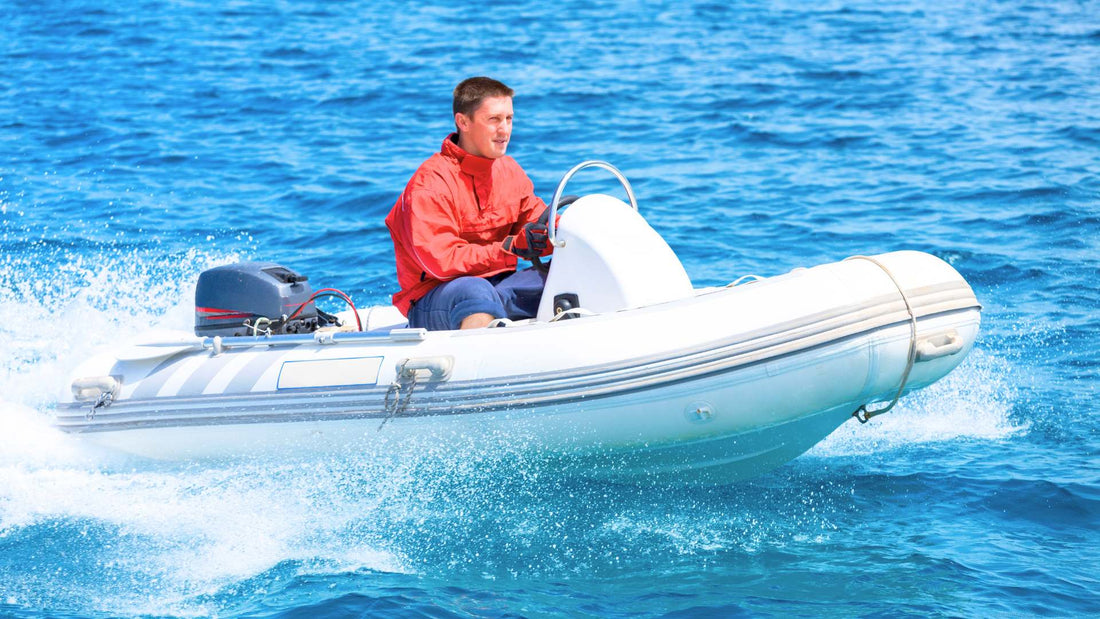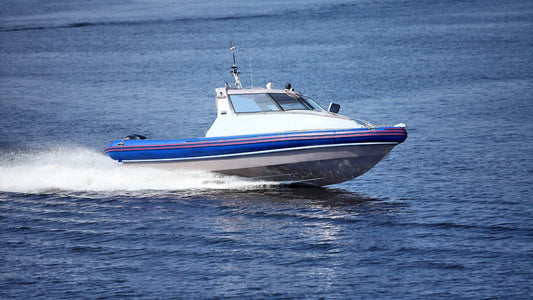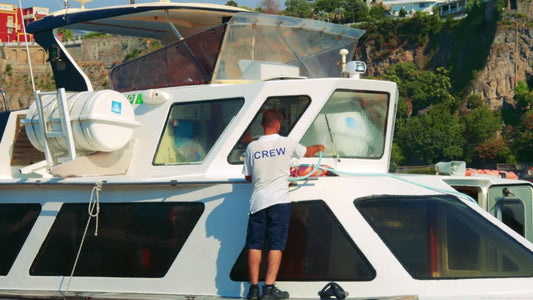
How to Clean Rubber and Inflatable Boats
Nicholas HeislerShare
If you've ever stepped aboard your inflatable or RIB boat after a long day on the water and noticed a film of grime, salt stains, or mildew creeping into the seams, you're not alone. These boats are known for their convenience, portability, and versatility-but they also demand the right care to stay in top shape.
Whether you own a Hypalon dinghy, a PVC inflatable, or a full-blown RIB, cleaning is non-negotiable if you want to maintain your investment, ensure safety, and preserve your boat's good looks. In this ultimate guide, we'll walk you through everything you need to know about cleaning rubber and inflatable boats the right way.
Why Proper Cleaning of Rubber, Inflatable, and RIB Boats Matters
Your inflatable boat endures a lot: UV rays, saltwater, fish guts, sunscreen residue, dirt, bird droppings-you name it. Without regular cleaning, these elements don't just make your boat look bad; they can actually weaken seams, degrade material, and foster the growth of mold and mildew.
Here's why regular cleaning is critical:
- Longevity: Salt and sun exposure break down the material over time. Regular cleaning prolongs the life of your boat.
- Safety: A slippery or moldy boat can create hazards for passengers.
- Resale Value: A clean boat holds its value and photographs better if you ever decide to sell.
- Performance: Cleaner surfaces experience less drag and help ensure all parts function properly.
Understanding Your Boat's Material (And Why It Matters for Cleaning)
Not all inflatable boats are made the same, and knowing what your boat is made of affects how you clean it.
- PVC (Polyvinyl Chloride): Lightweight and affordable. Common in recreational inflatables. More sensitive to harsh cleaners.
- Hypalon (CSM Rubber): UV and chemical-resistant. Often used in higher-end RIBs and commercial vessels.
- Polyurethane: Extremely durable and puncture-resistant but less common and typically pricier.
Each material reacts differently to cleaners. Many off-the-shelf products are too harsh and can degrade PVC or strip away protective coatings. Captain's Fury is specifically designed to be safe for all common inflatable boat materials-making it a go-to choice for boaters who care about long-term performance.
Must-Have Tools and Supplies for Cleaning Your Inflatable Boat
Before we get into the nitty-gritty, make sure you have the right gear ready. Here's what you'll need:
Essentials
- Soft bristle brush (won't scratch or damage seams)
- Non-abrasive sponge or microfiber cloth
- Bucket of fresh water
- Rubber gloves
- Captain's Fury Rubber & Inflatable Boat Cleaner
Optional Tools
- UV protectant spray (for after cleaning)
- Boat erasers (for spot stains)
- Small electric scrubber (for deep cleaning sessions)
- Towel or chamois for drying
Pro tip: Always clean your boat out of direct sunlight to avoid streaking and premature drying of your cleaning products.
Step-by-Step: How to Clean Your Inflatable or RIB Boat
Cleaning your boat doesn't have to be a hassle. In fact, with a high-quality cleaner like Captain's Fury, it's easier than ever. Here's a step-by-step process that'll keep your boat looking showroom fresh.
Step 1: Rinse Away Loose Dirt and Debris
Start with a good rinse using fresh water. This removes sand, dirt, bird droppings, and loose salt residue. Don't skip this step-rubbing debris into the surface can cause abrasion and premature wear.
Step 2: Apply Captain's Fury Cleaner
Spray Captain's Fury Rubber & Inflatable Boat Cleaner directly onto the surface to be cleaned. Let it sit for 1-2 minutes to break down grime, stains, and oils. For heavy buildup, let it soak a little longer.
Step 3: Scrub Gently
Use a soft bristle brush or non-abrasive sponge to work the cleaner into the surface. Focus on seams, handles, non-skid areas, and anywhere dirt tends to collect. For extra stubborn spots, a magic eraser can do wonders-but use sparingly and avoid heavy pressure.
Step 4: Rinse Thoroughly
Use fresh water to rinse away the cleaner. Make sure all suds and residue are removed, especially around seams and valves.
Step 5: Dry Completely
Use a soft towel or chamois to dry the boat. Let it air dry fully before deflating or covering. This helps prevent mildew and streaking.
Deep Cleaning Tips for Mold, Mildew, and Tough Stains
Let's face it-sometimes, boats get gross. Mildew, algae stains, and salt crust can build up in crevices and shadowed areas, especially after long trips or poor storage. Here's how to tackle the tough stuff:
- Mildew and Mold: Use Captain's Fury with a soft brush and allow it to sit for 5-10 minutes before scrubbing. For persistent mildew, follow up with a marine-safe mildew remover-but only after testing on a small area.
- Salt Deposits: These white crusty build-ups are common on inflatable boats. Soak the area with Captain's Fury and scrub gently after a few minutes.
- Black Scuff Marks: These often come from shoes or docking gear. A magic eraser or gentle cleaner concentration should help lift them without damaging the material.
Consistency is key: the longer you wait between cleanings, the harder these stains become to remove.
Post-Cleaning Care: Protecting and Storing Your Boat
After a good cleaning, it's worth taking a few extra steps to protect your boat from future damage.
Apply UV Protectant
Once dry, apply a marine-grade UV protectant to help shield your inflatable from sun damage. This is especially important for Hypalon boats, which, while UV-resistant, still benefit from added protection.
Proper Storage Tips
- Deflate Carefully: Avoid folding in the same place every time-creases can weaken fabric.
- Dry Completely: Moisture leads to mildew. Always make sure your boat is bone-dry before storing.
- Use a Storage Bag: Keep the boat out of direct sunlight and away from sharp objects.
- Ventilation Matters: If you're storing it inflated, cover it loosely to allow air circulation.
Following these steps will help you avoid the most common sources of material fatigue and degradation.
FAQs About Cleaning Inflatable and RIB Boats
How often should I clean my inflatable boat?
Ideally after every trip, especially if you've been in saltwater. A deep clean once a month is a good rule of thumb during heavy use.
Can I use household cleaners on my inflatable boat?
Most household cleaners are too harsh and can damage the material. Always use a marine-safe cleaner like Captain's Fury.
Is Captain's Fury safe for Hypalon and PVC boats?
Yes! It's formulated specifically for use on Hypalon, PVC, and other common inflatable materials.
How do I remove algae or fish residue?
Captain's Fury breaks down organic grime quickly. For heavy algae buildup, let it sit longer and use a soft brush to lift the debris.
Taking Care of Your Inflatable Boat or RIB
Taking care of your inflatable or RIB boat isn't just about looks-it's about preserving performance, safety, and value. With the right tools and a high-quality product like Captain's Fury Rubber & Inflatable Boat Cleaner, you can keep your boat in top condition season after season.
Snag a bottle of Captain's Fury Rubber + Inflatable Boat Cleaner here to prepare for your next cleaning!




